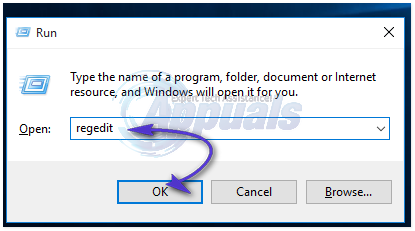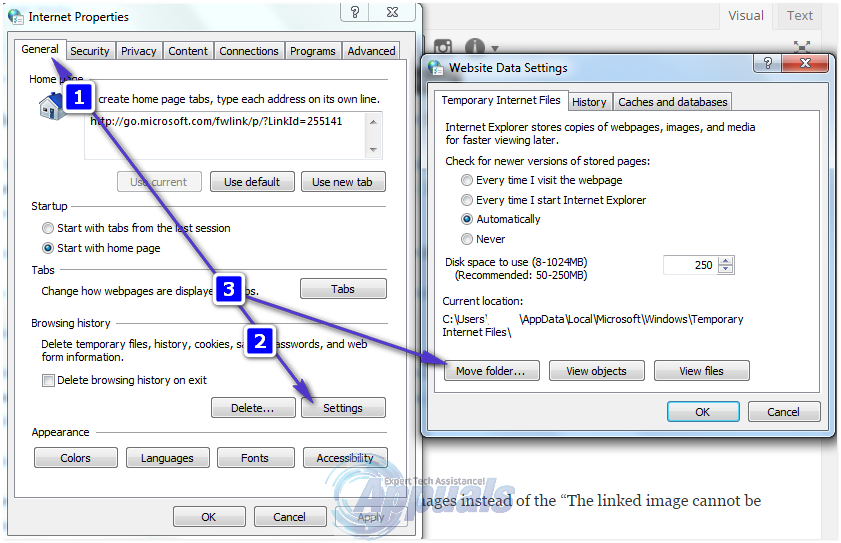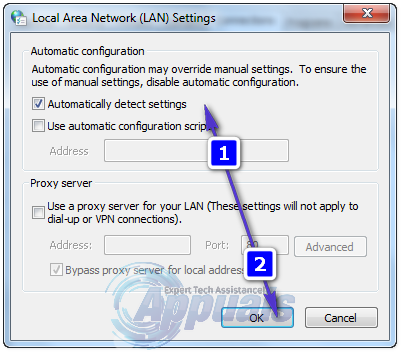FIX: The Linked Image Cannot Be Displayed in Outlook 2010
Outlook 2010, without a shadow of a doubt, is one of the best desktop email clients available, but it’s not to say that Outlook 2010 doesn’t have any flaws. Users of Outlook 2010 can encounter a multitude of different problems, including the “The linked image cannot be displayed” issue. This problem manifests as an error message that reads, “The linked image cannot be displayed. The file may have been moved, renamed, or deleted. Verify that the link points to the correct file and location.” Accompanied by a large red X, this error message appears on all the images that an Outlook user sends or receives in emails.
The issue of ‘The linked image cannot be displayed,’ in most cases, stems from either an incorrect registry value–which prompts Outlook to send a link to the physical path of an image file rather than the image itself–or a problem with the user’s Temporary Internet Files folder. Thankfully, this issue can be resolved. Here are two methods that have proven successful in fixing this issue for Outlook users who have experienced it in the past.
Method 1: Fix the “Send Pictures with Document” registry key
Open the Start Menu.
Type regedit into the Search bar and open the search result named regedit.

In the Registry Editor, navigate to the following directory in the left pane:
HKEY_CURRENT_USER\Software\Microsoft\Office\14.0\Outlook\Options\Mail
(Note: The folder named 14.0 may be different in your case depending on the version of Microsoft Office that you are using, but the rest of the directory will be the same.)
Click on Mail to display its contents in the right pane,
Look for a key titled Send Pictures with Document and once you find it, double-click on it to open its specifications.
The Value data for the key will be set to 0. Set the Value data to 1 and click on OK.
Close the Registry Editor and restart your computer. The issue should no longer persist once your computer boots up.
Method 2: Relocate your Temporary Internet Files folder
If Method 1 does not work for you, there’s a significant chance that relocating your Temporary Internet Files folder using Internet Explorer – which Outlook uses to connect to the internet – to a new location will solve the issue.
Close all open programs and applications and open Internet Explorer.
Go to ‘Tools’, then ‘Internet Options’. In the ‘General’ tab, click on ‘Settings’ under ‘Browsing History’ and select ‘Move Folder’.

Select a new location for your ‘Temporary Internet Files’ folder and click on ‘OK’. A directory, such as ‘C:\Users\\AppData\Local’, should suffice. This moving process will create a new subfolder in the ‘Local’ folder, naming it ‘Temporary Internet Files’.
Click on OK in the other two windows as well. Restart your computer, and Outlook should display actual images instead of the “The linked image cannot be displayed” error message once your computer boots up.
Method 3: Disable the ‘Use Proxy’ option in Internet Explorer’s LAN settings.
Contrary to common knowledge, Outlook 2010 connects to the internet through Internet Explorer. Therefore, you might start encountering ‘The linked image cannot be displayed’ error. This typically replaces where your email images should be if your Internet Explorer is configured to use a proxy server for your LAN. If this is the situation, to resolve the issue, you need to stop Internet Explorer from using a proxy server.
Open Internet Explorer.
Click on ‘Tools’ in the upper-right corner, then click on ‘Internet Options’. Next, navigate to ‘Connections’.
Click on ‘LAN settings’ at the bottom. Disable the ‘Use a proxy server for your LAN’ option by unchecking it, and then click on ‘OK’. Make sure that the ‘Automatically Detect Settings’ option is checked.

Click on ‘Apply’ and then on ‘OK’ in the Internet options. Close Internet Explorer.
Open Outlook 2010, and all your images will appear as they should.
Method 4: Disable any features in your antivirus program that protect the cache.
Outlook 2010 utilizes your computer’s cache to download images attached to the emails it sends and receives. Consequently, if the antivirus program you use protects your computer’s cache, for instance, from email address and password stealers, it will also prevent Outlook 2010 from downloading the images it receives. An example of such a feature is the ‘Maximum Protection: Protect cached files from password and email address stealers’ provided by the McAfee antivirus program. If a feature of your antivirus program protecting your computer’s cache is causing the ‘The linked image cannot be displayed’ issue on your computer, you can either disable the specific feature or uninstall your antivirus program altogether and switch to a different one.